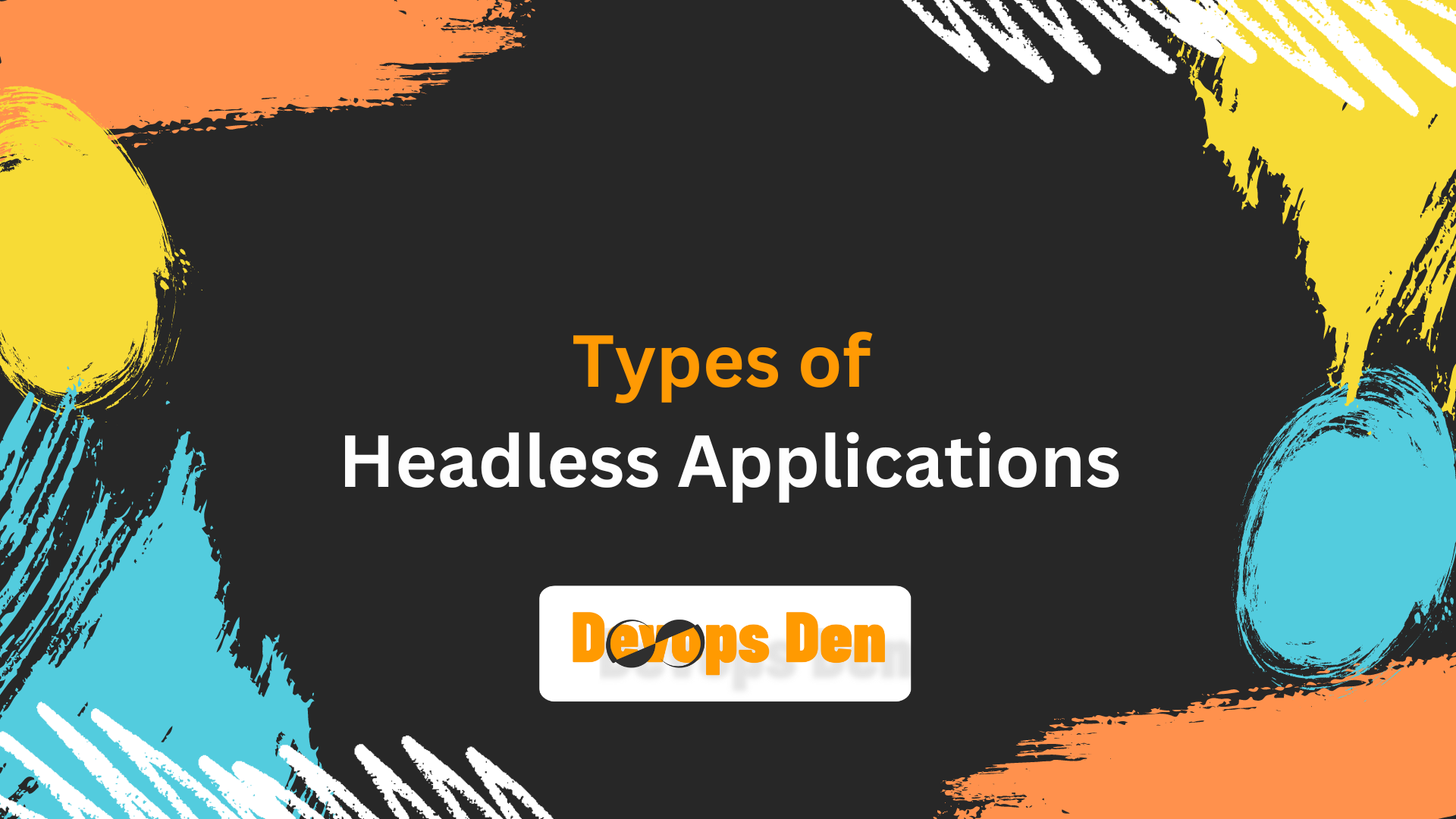Types of Headless Applications: A Comprehensive Overview
 Devops Den
Devops Den
In today's digital landscape, the demand for seamless, fast, and adaptable applications is at an all-time high. One approach that has gained tremendous popularity is the headless application architecture. Unlike traditional applications where the front-end and back-end are tightly coupled, headless applications separate the two, enabling greater flexibility and scalability. The core idea is to build a decoupled back-end system that communicates with any front-end through APIs.
In this blog, we'll explore the different types of headless applications and how they cater to various use cases.
1. Headless Content Management Systems (CMS)
Headless CMS is one of the most common types of headless applications. Unlike traditional CMS platforms, where the content is managed and presented via predefined templates (like in WordPress), headless CMS focuses solely on managing content. The presentation layer (front-end) can be built in any technology, such as React, Angular, or even mobile apps, using API calls to fetch content.
Key Benefits:
Platform-Agnostic Delivery: Content can be served to any device, from websites to mobile apps and IoT devices.
Improved Performance: Since the back-end and front-end are decoupled, performance can be optimized independently.
Flexibility: You are not restricted by the CMS's front-end technology, allowing for more creative freedom.
Examples: Contentful, Strapi, Sanity, and Prismic.
2. Headless E-commerce Platforms
Headless e-commerce platforms separate the user interface (UI) of an online store from the back-end functionality like product catalog, shopping cart, and checkout process. By using APIs, the front-end can be fully customized and integrated with the back-end, offering businesses the flexibility to deliver highly personalized shopping experiences across multiple channels, such as mobile, desktop, and even voice assistants.
Key Benefits:
Custom User Experiences: Retailers can create unique, brand-specific front-end experiences while utilizing powerful e-commerce functionality in the background.
Omnichannel Capabilities: The platform can push content and functionalities to any touchpoint, including mobile apps, websites, or kiosks.
Scalability: Allows for easy expansion and integration with new technologies and systems.
Examples: Shopify Plus, BigCommerce, Commerce Layer, and Magento Commerce.
3. Headless API Platforms
Some platforms are entirely built as headless API-first applications, where the front-end doesn’t exist by default. These headless API platforms provide robust back-end functionalities, leaving developers to decide how to consume the data. This approach is ideal for building custom applications, where the primary focus is the service provided rather than how it looks to the end user.
Key Benefits:
Developer-Centric: Tailored for developers who want more control over the front-end development process.
Versatility: Any front-end, whether web, mobile, or native applications, can be built using the same APIs.
Fast Prototyping: Rapid iteration and prototyping can be done using standardized back-end services while focusing on the presentation later.
Examples: Firebase, Hasura, Supabase.
4. Headless Digital Experience Platforms (DXP)
A Headless DXP enables businesses to manage and deliver personalized customer experiences across a variety of channels. While traditional DXPs bundle content, commerce, and personalization into a single platform, headless DXPs decouple the content and personalization layer, giving developers more freedom to choose how and where experiences are delivered.
Key Benefits:
Personalization: Offers more sophisticated and personalized user experiences through AI and customer data integration.
Cross-Channel Capabilities: Provides a consistent experience across various customer touchpoints, including web, mobile, social media, and IoT devices.
Advanced Analytics: Gives businesses a 360-degree view of customer interactions, which can be used for further personalization.
Examples: Sitecore, Adobe Experience Manager, Acquia.
5. Headless IoT Applications
The Internet of Things (IoT) thrives on headless architectures due to the need for data exchange across various devices that don’t have traditional user interfaces. Headless IoT applications focus on the seamless communication of devices through APIs and cloud infrastructure. Whether it’s smart home devices, wearables, or industrial IoT systems, headless architecture allows data and actions to flow without the constraints of a traditional user interface.
Key Benefits:
Device Independence: Data can be exchanged across devices of varying capabilities and platforms.
Real-Time Processing: IoT devices can interact and update in real time, providing a smooth user experience.
Scalability: Easily integrate additional devices or scale across platforms.
Examples: Amazon Web Services IoT Core, Google Cloud IoT, Microsoft Azure IoT.
6. Headless Learning Management Systems (LMS)
With the increasing adoption of online education, headless LMS has become a compelling option for educators and companies. A headless LMS separates the educational content management from its presentation, allowing organizations to create tailored learning experiences for different audiences on various devices. Educational content can be managed centrally but delivered to web apps, mobile apps, or even AR/VR platforms.
Key Benefits:
Custom Learning Paths: Courses can be delivered differently depending on the platform and the learner's needs.
Device Flexibility: Access can be provided across different learning devices, ensuring a consistent experience.
Modular Integration: Easily integrate with other platforms such as assessment tools, video conferencing, and student information systems (SIS).
Examples: Teachable (when paired with custom front-ends), LearnDash, Graphy.
Conclusion
Headless applications have revolutionized the way we think about software architecture. By decoupling the front-end from the back-end, businesses can build highly customized, scalable, and efficient applications. Whether it’s a headless CMS, e-commerce platform, or IoT application, the possibilities are vast. As digital experiences continue to evolve, headless architectures are poised to remain at the forefront of innovation, offering endless opportunities for businesses and developers alike.
Subscribe to my newsletter
Read articles from Devops Den directly inside your inbox. Subscribe to the newsletter, and don't miss out.
Written by

Devops Den
Devops Den
Whether you're a seasoned DevOps professional or just starting your journey, we're here to support you with expert insights, practical guides, and valuable tools to help you succeed in the world of DevOps